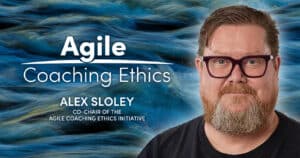Recently, a team of practitioners with a variety of backgrounds, experiences, beliefs, and cultures has come together to collaborate on an Agile Practice Guide sponsored by Agile Alliance and Project Management Institute for publication in 2017. We are unique in that we represent what are considered very different organizations with dissimilar, even opposing, mindsets tasked with coming together in agreement. We have also learned that we all have the same outcome in mind – to provide both communities with something special. A usable guide that provides practitioners greater understanding of the applications of agility. An understanding of the components in Agile that enables a shift in projects, programs, and organizations to move further along the path of agility where beneficial…
Agile Practice Guide Team Vision: Enabling better results by equipping practitioners to become more agile and integrate additional tools through the application of situational guidelines.
Why is this important?
It’s important because we need to build a bridge between the communities of the two organizations and learn how to support each other. We need to become servant leaders and walk the talk. We, our communities and practitioners, often talk about PMI and Agile Alliance as opposing organizations, like we are political parties with completely opposing views. Like we are engaged in a battle for what is right or wrong in totality. In actuality, neither is completely right or completely wrong in and of itself. We and our communities of practitioners make it so by our words and actions. Both communities have within their DNA the relentless drive to deliver value and quality, to communicate openly, and to take the high road to resolution. Yet there is tension and a belief that “we are better than them” but who is “we” and who is “them”? And what does “better” mean in this context?
We often discuss Traditional Plan-Driven and Agile methods as if there is nothing that joins them together. As if they are absolutes and there is nothing in between that may provide a pathway to moving between them. This is incorrect and in actuality, there are far more projects, programs, and organizations in the middle using a blend of methods. These are a hybrid of Plan-Driven and Agile methods, frameworks, tools, and mindsets. Hybrid is a much broader representation of what is truly happening in most businesses rather than what is at either end of the spectrum.
The Agile Practice Guide is a collaborative effort to facilitate a more holistic and inclusive view and we would like to ask you, the members of both communities, to assist us in getting there. We will be blogging on many of the facets of this guide and we’re asking for your thoughtful feedback. Please join us in building a bridge to shared understanding. We believe this Agile Practice Guide will help many of us to accelerate our journey to excellence.











